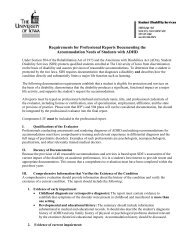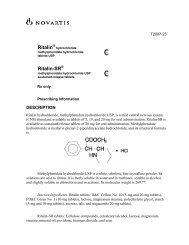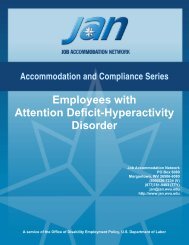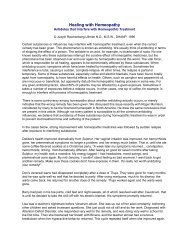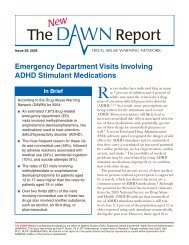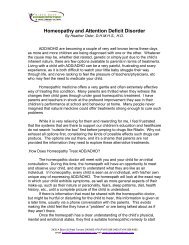Documentation Requirements for Attention ... - ADHD Info Centre
Documentation Requirements for Attention ... - ADHD Info Centre
Documentation Requirements for Attention ... - ADHD Info Centre
You also want an ePaper? Increase the reach of your titles
YUMPU automatically turns print PDFs into web optimized ePapers that Google loves.
assessment, or new medications may have been prescribed or discontinued, which would result<br />
in the necessity of an update in the evaluation report. The update must include a detailed<br />
assessment of the current impact of the <strong>ADHD</strong> and interpretive summary of relevant<br />
in<strong>for</strong>mation (see requirement #VI below) as well as the previous diagnostic report.<br />
III. <strong>Documentation</strong> Necessary to Substantiate the Diagnosis Must Be<br />
Comprehensive<br />
A. Standard scores and/or percentiles must be provided <strong>for</strong> all normed measures. Grade<br />
equivalents must be accompanied with standard scores and/or percentiles.<br />
B. The data must logically reflect a substantial limitation to learning <strong>for</strong> which the student is<br />
requesting accommodation.<br />
C. The particular profile of the student's strengths and weaknesses must be shown to relate to<br />
functional limitations that may necessitate accommodations.<br />
D. The testing instruments must be reliable, valid, and standardized <strong>for</strong> use with a adolescent/adult<br />
population.<br />
E. In<strong>for</strong>mal inventories, surveys, self reports, and direct observation by a qualified professional<br />
may be used in tandem with <strong>for</strong>mal tests in order to further develop a clinical hypothesis.<br />
F. Evidence of Early Impairment<br />
Because <strong>ADHD</strong> is, by definition in the DSM-IV, first exhibited in childhood (although it may<br />
not have been <strong>for</strong>mally diagnosed) and manifests itself in more than one setting, relevant<br />
historical in<strong>for</strong>mation is essential. The following should be included in a comprehensive<br />
assessment: clinical summary of objective historical in<strong>for</strong>mation, establishing symptomology<br />
indicative of <strong>ADHD</strong> throughout childhood, adolescence, and adulthood as garnered from<br />
transcripts, report cards, teacher comments, tutoring evaluations, and past psycho-educational<br />
testing; and third party interviews when available.<br />
G. Evidence of Current Impairment<br />
In addition to providing evidence of a childhood history of impairment, the following areas<br />
must be investigated:<br />
1. Statement of Presenting Problem<br />
A history of the individual's presenting attentional symptoms should be provided, including<br />
evidence of ongoing impulsive/hyperactive or inattentive behaviors that significantly impair<br />
functioning in two or more settings.<br />
2. Diagnostic Interview<br />
The in<strong>for</strong>mation collected <strong>for</strong> the summary of the diagnostic interview should consist of more<br />
than self-report, as in<strong>for</strong>mation from third party sources is critical in the diagnosis of <strong>ADHD</strong>.



